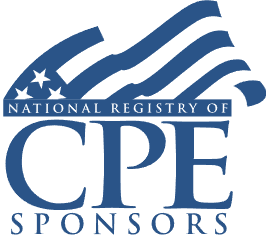Structuring Section 708 Partnership Mergers Absent IRS Guidance: Avoiding Termination in Collapsing Transactions
Assets-Over vs. Assets-Up Transactions, Maintaining Continuity of Interest, and Deferring Tax Recognition

Course Details
- smart_display Format
On-Demand
- signal_cellular_alt Difficulty Level
Intermediate
- work Practice Area
Tax Law
- event Date
Wednesday, September 28, 2016
- schedule Time
1:00 PM E.T.
- timer Program Length
90 minutes
-
This 90-minute webinar is eligible in most states for 1.5 CLE credits.
-
BARBRI is a NASBA CPE sponsor and this 110-minute webinar is accredited for 2.0 CPE credits.
-
BARBRI is an IRS-approved continuing education provider offering certified courses for Enrolled Agents (EA) and Tax Return Preparers (RTRP).
-
Live Online
On Demand
This CLE/CPE course will provide tax counsel and advisers with a practical guide to structuring partnership transactions to qualify for partnership merger treatment as a continuing interest under Section 708. The panel will identify tax issues of collapsing separate upper-tier partnerships (UTPs) and lower-tier partnerships (LTPs) into a single entity in the absence of definitive IRS guidance as to tax treatment, and will offer guidance on structuring partnership mergers to avoid tax recognition.
Description
While Section 708 governs the tax treatment of partnership mergers and generally provides that a merged partnership is a continuation of one of the partnerships, it does not provide any definition as to what types of transactions qualify as a partnership merger.
In general terms, a partnership merger occurs in transactions where two or more partnerships combine and no more than one partnership emerges from the transaction. However neither the Code nor the regs provide concrete guidance on which partnership is deemed as the continuing entity in a merger transaction.
In certain partnership combinations, particularly those that “collapse” a UTP with an LTP, this can create significant tax risk. In the absence of definitive guidance, tax counsel and advisers must carefully structure such partnership mergers so the transactions can be clearly presented as a non-taxable continuation of one existing partnership.
There are several types of transaction structures that counsel may utilize to merge partnerships, notably the “assets-over” structure and the “assets-up” structure. Each of these forms carries some risk that the merger transaction may be characterized as a taxable termination of the existing partnerships. Tax counsel must be keenly aware of the structuring considerations in drafting a merger transaction.
Listen as our experienced panel provides a practical guide to the risks of structuring partnership mergers in the absence of definitive IRS guidance under Section 708.
Outline
- Structures of mergers and conversions: state rules vs tax rules
- Partnership merger and division rules vs corporate rules
- Section 708 “continuing interest” provisions
- Determination of which partnership is the “continuing” entity in a merger transaction
- “Assets-over” structures
- “Assets-up” structures
- Traps to avoid
Benefits
The panel will discuss these and other important topics:
- Determining which partnership is considered the continuing entity in a “collapsing” transaction involving a UTP and an LTP
- Distinguishing "assets-over” vs. “assets-up” transaction structures
- Anticipating the risks of 721 contribution of interest transactions
- Avoiding “mixing bowl” traps in connection with a partnership merger
NASBA Details
Learning Objectives
After completing this course, you will be able to:
- Recognize the general requirements for continuity of interest treatment provided in Section 708
- Determine the tax risks involved in a partnership merger or “collapsing” transaction
- Discern between various types of “assets-over” and “assets-up” transaction structures
- Identify the tax recognition risks in a contribution of interests transaction governed by Section 721
- Field of Study: Taxes
- Level of Knowledge: Intermediate
- Advance Preparation: None
- Teaching Method: Seminar/Lecture
- Delivery Method: Group-Internet (via computer)
- Attendance Monitoring Method: Attendance is monitored electronically via a participant's PIN and through a series of attendance verification prompts displayed throughout the program
- Prerequisite:
Three years+ business or public firm experience structuring partnership agreements and preparing complex tax forms and schedules at mid-level within the organization, supervising the work of other preparers/accountants. Knowledge and understanding of tax consequences involved with partnership merger treatment as a continuing interest under Section 708. Familiarity with approaches to and anticipating tax issues resulting from collapsing separate upper-tier (UTP) and lower-tier (LTP) partnerships into a single entity.

Strafford Publications, Inc. is registered with the National Association of State Boards of Accountancy (NASBA) as a sponsor of continuing professional education on the National Registry of CPE Sponsors. State boards of Accountancy have final authority on the acceptance of individual courses for CPE Credits. Complaints regarding registered sponsons may be submitted to NASBA through its website: www.nasbaregistry.org.

Strafford is an IRS-approved continuing education provider offering certified courses for Enrolled Agents (EA) and Tax Return Preparers (RTRP).
Unlimited access to premium CLE courses:
- Annual access
- Available live and on-demand
- Best for attorneys and legal professionals
Unlimited access to premium CPE courses.:
- Annual access
- Available live and on-demand
- Best for CPAs and tax professionals
Unlimited access to premium CLE, CPE, Professional Skills and Practice-Ready courses.:
- Annual access
- Available live and on-demand
- Best for legal, accounting, and tax professionals
Unlimited access to Professional Skills and Practice-Ready courses:
- Annual access
- Available on-demand
- Best for new attorneys
Related Courses

Hedge Funds and IRS Partnership Audit Rules
Available On-Demand

IRC Section 338(h)(10) Election Strategies for Tax Counsel
Available On-Demand
Recommended Resources
How CPE Can Bridge the Gap Between What You Know and What You Need to Know
- Career Advancement
Gain a Competitive Edge Through Efficient CPE Strategies
- Learning & Development
- Business & Professional Skills
- Career Advancement